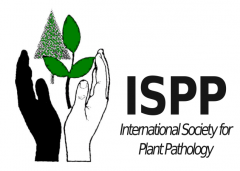
Conserved fungal effector suppresses PAMP-triggered immunity by targeting plant immune kinases
PNAS
2018Authors: Hiroki Irieda, Yoshihiro Inoue, Masashi Mori, Kohji Yamada, Yuu Oshikawa, Hiromasa Saitoh, Aiko Uemura, Ryohei Terauchi, Saeko Kitakura, Ayumi Kosaka, Suthitar Singkaravanit-Ogawa, and Yoshitaka Takano
Plant pathogens have optimized their own effector sets to adapt to their hosts. However, certain effectors, regarded as core effectors, are conserved among various pathogens, and may therefore play an important and common role in pathogen virulence. We report here that the widely distributed fungal effector NIS1 targets host immune components that transmit signaling from pattern recognition receptors (PRRs) in plants. NIS1 from two Colletotrichum spp. suppressed the hypersensitive response and oxidative burst, both of which are induced by pathogen-derived molecules, in Nicotiana benthamiana. Magnaporthe oryzae NIS1 also suppressed the two defense responses, although this pathogen likely acquired the NIS1 gene via horizontal transfer from Basidiomycota. Interestingly, the root endophyte Colletotrichum tofieldiae also possesses a NIS1 homolog that can suppress the oxidative burst in N. benthamiana. We show that NIS1 of multiple pathogens commonly interacts with the PRR-associated kinases BAK1 and BIK1, thereby inhibiting their kinase activities and the BIK1-NADPH oxidase interaction. Furthermore, mutations in the NIS1-targeting proteins, i.e., BAK1 and BIK1, in Arabidopsis thaliana also resulted in reduced immunity to Colletotrichum fungi. Finally, M. oryzae lacking NIS1 displayed significantly reduced virulence on rice and barley, its hosts. Our study therefore reveals that a broad range of filamentous fungi maintain and utilize the core effector NIS1 to establish infection in their host plants and perhaps also beneficial interactions, by targeting conserved and central PRR-associated kinases that are also known to be targeted by bacterial effectors.
Allegati
1807297116.full-1.pdf (2 MB)




